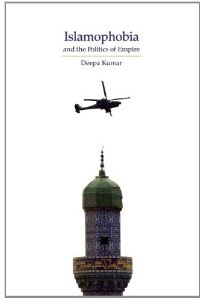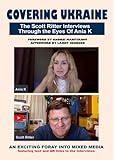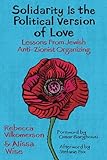Deepa Kumar, begins her impressive book, Islamophobia and the Politics of Empire, in an era of the historical greatness of Islam which saw it spread from the Arabian peninsula eastwards into Asia and westwards across Africa and up into Europe. Islam, writes Kumar, paved the way for the Renaissance.
Later, European colonialism would rise with it its mission civilisatrice and “White man’s burden,” to restore, purportedly, Muslim-majority countries to greatness. Explicit was European superiority. The Islamic empire would be rewound and engulfed by European empire, something to this day that it has not fully recovered from.
United States imperialism stepped in when European power waned. American views were no better disposed to Muslims. Even the anti-imperialist Mark Twain, notes Kumar, penned racist views toward Muslims, calling them “a people by nature and training filthy, brutish, ignorant, unprogressive [and] superstitious.” ((Twain’s words speak to his own progressive credentials. He also had “unprogressive” words about the Indigenous peoples of Turtle. He wrote that the “Indians” were “thoroughly pitiful and contemptible,” “The scum of the earth…” that the Indian’s language “consists of plain, straightforward lies”; “He is ignoble—base and treacherous, and hateful in very way.” Mark Twain, “The Noble Red Man,” in Tales, Sketches, Speeches, & Essays, 1852-1890, Vol. 1 (New York: The Library of America, 1992): 442-446.))
 In modern times, 9-11 was used to ratchet up Islamophobia. Kumar points out that much of the hate is driven by myths. She devotes chapter 3 to debunking the myths, starting with the myth of Islam as a monolithic religion. Many people are cognizant of the Sunni and Shi’a split making Islam no more of a monolith than Christianity with its Catholic-Protestant split, or Buddhism with its Theravada, Mahayana, and Vajrayana schools. Myth Two: Islam is misogynistic: She does not deny misogynistic practices in Islam but writes that they “were largely inherited” from Christian and Jewish religious practices. Misogyny is not parochial to Islam, and it needs to be fought wherever it exists. Clearly, Islamophobia is not a paean to Islamism, which is not above reproach by Kumar.
In modern times, 9-11 was used to ratchet up Islamophobia. Kumar points out that much of the hate is driven by myths. She devotes chapter 3 to debunking the myths, starting with the myth of Islam as a monolithic religion. Many people are cognizant of the Sunni and Shi’a split making Islam no more of a monolith than Christianity with its Catholic-Protestant split, or Buddhism with its Theravada, Mahayana, and Vajrayana schools. Myth Two: Islam is misogynistic: She does not deny misogynistic practices in Islam but writes that they “were largely inherited” from Christian and Jewish religious practices. Misogyny is not parochial to Islam, and it needs to be fought wherever it exists. Clearly, Islamophobia is not a paean to Islamism, which is not above reproach by Kumar.
Myth Three: The “Muslim Mind” is incapable of reason and rationality. Obviously such a mind-set is racist, and to disprove it, all one would be required to do is find one rational Muslim. Surely, there is no more a “Muslim Mind” than there is a “Christian Mind.” Homo sapiens are a diverse species. They form groups, but despite similarities in core beliefs among group members, it is not difficult to find differences. Myth Four: Islam is an inherently violent religion. From personal experience this is complete rubbish. I lived two years in the Muslim-majority country of Jordan, and while many Jordanians were pious, they were among the most peaceful people I have met. I lived almost a year in Maldives, another Muslim-majority country where the people were exceptionally friendly. The mendacity of the myths is particularly galling when the US and western countries refuse to abjure their own violence through occupation/oppression and rule by proxy of Muslim majority countries, nor do they renounce their own military violence. Myth Five states that Muslims are predisposed to languish under Dictatorship. The democratic uprisings in Tunisia, Egypt, Yemen, and Bahrain (brutally crushed by Bahraini-Saudi forces with the western governments’s dead silence) belies that assertion.
Kumar, who is a professor of Media Studies and Middle East Studies at Rutger University, writes, “[US] interests did not (and do not) lie in supporting democratic movements on their own terms.” Oil in the Middle East has motivated the US to support dictators and repression.
On p. 71, Kumar writes of a “model of anti-US Islamism” that arose following the deposing of the US-installed monarch in Iran. This wording is pejorative and unfair and unexpected from Kumar who is very conscious throughout her book about the implications of wording. Is not the more accurate wording “Islam that is anti-the-crimes-of-the-US” rather than “anti-US Islamism”?
Islamophobia is a well-organized, coherently thought-out text on the racism and discrimination that confronts Arabs, Muslims, and people who look Arab or Muslim (which reveals ignorance because Islam is not bound up in race, and anyone who has been to an Arab country will note that white-skinned, blue-eyed, and even blonde-haired Arabs exist). The book is also meticulously referenced, although one claim caught my eye as being misleading. On p. 67, Kumar cites author Farwaz Gerges about the slain anti-imperialist Muammar Gaddafi: “Muammar Gaddafi also deployed Islamic symbols and language to legitimize his rule in Libya in the early 1970s. A vocal opponent of the West, he proclaimed that Libya was an Islamic state and that he intended to promote Islamic ‘radicalism’ and ‘terrorism’ around the world.”
Promotion of Islamic “radicalism” sounds very plausible. However, Gaddafi announcing his intent to promote “terrorism” raised my skepticism. What Gerges says on p. 42 of America and Political Islamism is: “According to a US official who served then as an ambassador to a Central African state, American diplomats, whether in Washington or Africa, became preoccupied with Quaddafi’s proclamation of an Islamic state, his promotion of Islam as the religion of the “black man” in Africa, and his spreading of Islamic ‘radicalism’ and ‘terrorism’ worldwide.”
Clearly Gaddafi did not state this directly; an anonymous “US official” stated this. Just how credence should be allocated to US officials are, especially about terrorism (given that the US organizes terrorist groups, is guilty of “horrendous terrorist crimes,” is the only country found guilty of terrorism by the world court, and is a “leading terrorist state” (( “The United States is a Leading Terrorist State: An Interview with Noam Chomsky by David Barsamian,” Monthly Review, November 2001.)) ) is a topic on which readers can do their own research, critical analysis, and form their own conclusions.
Nonetheless, this minutiae in Kumar’s book does not detract from its brilliantly argued thesis. It is compellingly argued that the US is trying to create a capitalist world order under which Islamic groups and Muslim-majority nations are depicted as friends or foe depending on the submission to the US-led order.
Kumar writes that the US is much to blame for the rise of Islamism, which was largely as a result of destroying secular leftist and nationalist movements in Arab countries. Islamic groups were left to fill the void.
In chapter six, Kumar examines Political Islam. She relates that, traditionally, Muslim religious scholars argue that tyranny is better than anarchy, and a Muslim ruler, even though corrupt, is needed to defend against infidels – a seeming recipe for enduring dictatorship. She also criticizes Islamist promotion of capitalism and neoliberalism and sees the need for a leftist alternative. Tactically, Kumar advocates, “When organized against imperialism and oppression, Islamists deserve the critical and conditional support of the left.”
She adds, “… the resistance of a colonized people, no matter what form it takes, should be supported, particularly when left alternatives have discredited themselves.” Still the professor warns, “In general, Islamists might at times fight against imperialism, but they are not principles anti-imperialists.”
Two main antagonists of Islamism are the neocons and Israel, which are intertwined. Yet in the US, Zionism is supported by both halves of the political duopoly. As a tool, Islamophobes have seized upon humanitarian imperialism as a guised pretext for naked imperialism to impose itself on Muslim-majority states. Kumar characterizes Barack Obama as a proponent of liberal imperialism and liberal Islamophobia. Liberal Islamophobia, according to Kumar, rejects “the clash of civilizations” thesis and acknowledges the existence of “good Muslims.”
Chapter 8 looks at legalizing racism. Islamophobia details “systematic violations of the civil liberties of Muslims and Arabs”: pre-emptively prosecuting “potential” terrorists, accusing Muslim charities of being fronts for terrorism, and using of agents provocateurs and entrapment, the latter duly depicted by the case of the so-called Newburg Four that preyed on the poverty of four African Americans. The corporate media, as usual, plays along with creating a terrorism spectacle.
Kumar puts the acts of terrorism in a comparative framework: she cites statistics for 2010 of 15 American victims of terrorism worldwide and contrasts this, among others, with 45,000 Americans dying each year from lack of medical coverage. Ergo, the US government through failure to extend medical coverage to all its citizens is responsible for a massive magnitude of deaths that far outstrips terrorist-caused deaths. The logic that drives the US regime is, obviously, to pour billions upon billions of dollars into destroying Muslim-majority countries instead of using the blood money to save thousands of American lives.
How can this be so? Kumar explains, “When the United States goes to war against a foreign enemy, it inevitably makes war on the perceived enemy within, which includes not only members of particular ethnic or national groups, but also dissenters of all races.”
Demonization is part of the overarching strategy of US warmongers. One pro-war, US patriot, and fighter-bomber pilot gave his account of US war on Viet Nam ((Ed, Cobleigh, War for the Hell of It: A Fighter Pilot’s View of Vietnam (New York: Berkeley Caliber, 2005).)): “I have bought into the relentless mental conditioning telling me that they [the Vietnamese] are unworthy of the pity and sympathy afforded to humans who are on our side in this ineptly fought war …. For most of this century, the enemy of the moment has been demonized by human caricatures and insulting names…. Pinning a label across an enemy’s face facilitates remorseless killing. The image I have in my head of the ‘bad guys’ allows me to sleep soundly at night” (p. 112).
The pilot’s justification for fighting against the Vietnamese remains the same for stigmatizing Arabs and Muslims today: “We have to end the modern era of evil dictators. We have to purge them from the globe…” (p. 113). “We are fighting for the right of free men (and women) to say no, to tell their rulers to get fucked, to suffer the consequences of protest, and yet keep on living” (p. 114).
Recently, RT reported that standard NYPD practice allows “targeting minorities without firm evidence of wrongdoing…” The potential terrorist is obsessively sought in the homeland. Muslims, Arabs, and other Brown people are rounded up and interrogated. Kumar emphasizes, “…the threat from terrorism is a manufactured crisis, one used to justify war and continued violations of civil liberties domestically.” Islamophobic organizations seek to exploit the hysteria inculcated in Americans about the alleged “Islamic threat”: for example, a so-called Christian priest tried to hold a Koran burning, right-wingers organized against the Cordoba House Islamic community center in New York, and groups like Campus Watch have targeted Middle East studies and pro-Palestinians on campuses.
Kumar identifies the kindred spirits of Islamophobia as right-wing Zionists, the Christian far Right, conservative Muslims and ex-Muslims who through access to media, as “educators,” and with liberal enablers have helped to make Islamophobia systemic. Thus Islamophobia is inculcated; it is largely situational – not dispositional. ((Phillip Zimbardo in The Lucifer Effect: Understanding How Good People Turn Evil (Random House, 2007) goes through the scholarly literature, including his own experiments, and emphasizes the power of the System and situation on people’s behavior.)) Deplore the attitudes and discrimination, but don’t hate the person. The Islamophobes, like other bigots, are victims of their environment.
In last chapter Kumar identifies how to fight Islamophobia: the environment needs to be altered starting at the grassroots level and by building solidarity. Kumar makes clear it is in the 99%-ers best interests:
…Americans who have had trillions of dollars stolen from their health care, education, infrastructure, and public transportation and funneled into the machinery of death. Working-class Americans of all races have nothing to gain from the spoils of empire—and everything to lose…. The only way to challenge the climate of fear and hate is to confront bigotry whenever it raises its head…
Islamophobia destroys the Manichean myth about Islam. It is a religion, and like other religions, its adherents interpret and act on the interpretations in many ways (which is an omnipotent argument against the existence of an omniscient god).
Islamophobia is a literary continuation of Edward Said’s Orientalism and Covering Islam. It is written in its own coherent and rigorous fashion, and it is eminently more accessible to the reader than Said’s writing. A brilliant book.










